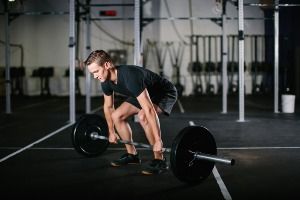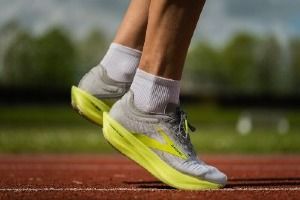Improve Your Running Economy

Hello!
In this newsletter I am discussing why Running Economy is important to consider if you are looking to improve your race PB or just want to be able run faster. This edition will cover the following sections:
- Introduction
- What is Running Economy?
- Why Running Economy is Important
- How you can improve Running Economy
- Practical Applications
Introduction
Distance running ability is dependent on various physiological and biomechanical factors. Maximal Oxygen uptake (V02max) is a commonly known term with endurance athletes as it indicates how many millilitres of oxygen the body can deliver to the working muscles per kilogram of body weight in one minute (ml/kg/min).
However, other factors that can affect aerobic performance include Lactate Threshold (LT) and maybe less commonly known amongst recreational athletes that can affect running performance is Running Economy (RE).
So what is RE?
RE differs to V02 max as it measures how much oxygen an athlete would use at a given sub-maximal running speed as opposed to the speed at the athletes maximal oxygen uptake.
For example:
Let’s say a recreational endurance runner has a V02 max of 55 (ml/kg/min). At V02 max this athletes pace might equate to 3.7 min/km. However, this pace would likely only be sustainable for around 5-10 minutes even if they were well trained. Therefore, this pace would not be able to be sustained for someone wanting to cover a 5K, 10K, Half or Full Marathon Distance.
During a sub-maximal training pace, this athlete might be able to sustain a pace of 5 min/km which could be sustainable over a longer time and distance. RE would be a measure of how much oxygen an athlete requires to maintain this pace.
Why is RE important?
It is possible that even though 2 athletes may have the same V02 max, their efficiency at utilising that oxygen consumption could be completely different. Therefore, one athlete may require a higher amount of oxygen to sustain a sub-maximal pace of 5 min/km than another.
This could have implications as the race or distance evolves as the runner with better RE (reduced oxygen and metabolic demand) will likely sustain the higher speed for longer duration with less energy expenditure.
As a practical example, the athlete with the better RE should be able to sustain their desired pace whereas the athlete with the lower RE may fatigue and experience a reduction in pace as the time or distance evolves. Similarly, improving RE would allow for an increase in training or race pace thresholds.
Factors that affect RE
There are many factors that can affect RE (Balsalobre-Fernandez et al. 2015) which include:
- Biomechanics
- Muscle fibre distribution
- Age
- Sex
- Anthropometrics (body size/proportions)
The good news is that RE can be improved through training strategies.
How to Improve RE
Improvements in RE can be made through strength training with various forms of resistance training, explosive training, and plyometric training (Balsalobre-Fernandez et al. 2015).
Strength training can improve RE due to:
- Improved lower limb coordination enhancing muscle coactivation.
- Increased muscle stiffness decreasing ground contact times.
- Improving strength of type I and type II muscle fibres resulting in more force.
- Improved biomechanical efficiency and muscle recruitment patterns.
These improvements can help a runner to run more efficiently at a given running speed reducing the overall oxygen and metabolic demand (Turner, 2011).
Improving muscle-tendon stiffness can help an athlete utilise stored elastic energy through tendon recoil which can increase power and conserve energy during locomotion. Essentially the Achilles tendon stores energy on ground contact and releases it at foot push off acting like a spring.
Plyometric training is the optimal method of developing muscle-tendon stiffness and the ability to utilise that stored elastic energy. It can result in improved rate of force development and reduce ground contact times helping the athlete become more mechanically efficient (Turner, 2010, 2011).
A study by Alexander et al. (2019) showed that strength training interventions can improve RE by 2-8% after 6-20 weeks in individuals with 6 months running experience.
Practical Applications
Concurrent strength or plyometric with endurance training has been shown to improve RE in both recreational and well-trained endurance runners (Lum, 2016).
Strength training:
2-3 x per week, 3-4 lower limb exercises e.g. Back Squat, Romanian Deadlift.
>85% 1 Rep Max, 3-4 sets, 3-8 repetitions.

Plyometric training:
2-3 x per week, Bodyweight e.g. Ankling, Bilateral/Unilateral Hopping, Jump up to low box. Exercises can be regressed/progressed depending on the individual circumstances.
3-5 sets, 5-10 repetitions.

Depending on your training age, work/life demands, endurance running schedule and any planned races it is important to tailor the resistance and plyometric training to your individual needs. A periodized plan allows for you to get maximum benefits out of your training and peak for any events.
For example, if you do not belong or have time to go to a gym, just starting with a home based bodyweight resistance program and maybe incorporating resistance bands could be an ideal starting point. This would enable you to develop some relative bodyweight strength and improve neuromuscular coordination.
Although it is still important to improve V02 max and run if you want to improve your running performance, it is worthwhile looking at improving RE. Especially, if you feel you have plateaued or want to change up your winter training.
If you need help in how to incorporate a resistance training program into your schedule, help with exercise selection or programme design I offer the following:
- In-person coaching where I can provide a movement screen and create a tailored training plan that addresses any muscle imbalances or movement dysfuntions combined with any endurance based training.
- An online zoom consultation and individualised training plan.
- Both In-person and online have access to their training program via an app to include videos of all exercises.
If you have any questions, please email me at lee@leeransomcoaching.com
Thank you for reading and good luck improving your RE!
Subscribe if you want to get future newsletters straight to your inbox.
References
Alexander, J. L. N., Barton, C. J., & Willy, R. W. (2019). Infographic. Running myth: strength training should be high repetition low load to improve running performance. British Journal of Sports Medicine.
Balsalobre-Fernández, C., Santos-Concejero, J. and Grivas, G.V. (2016). Effects of Strength Training on Running Economy in Highly Trained Runners. Journal of Strength and Conditioning Research, 30(8), pp.2361–2368.
Lum, D. (2016). Effects of Performing Endurance and Strength or Plyometric Training Concurrently on Running Economy and Performance. Strength and Conditioning Journal, 38(3), pp.26–35.
Turner, A.N. (2011). Training the Aerobic Capacity of Distance Runners: A Break From Tradition. Strength and Conditioning Journal, 33(2), pp.39–42.
Turner, A.N. and Jeffreys, I. (2010). The Stretch-Shortening Cycle: Proposed Mechanisms and Methods for Enhancement. Strength and Conditioning Journal, 32(4), pp.87–99.